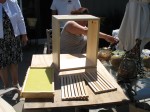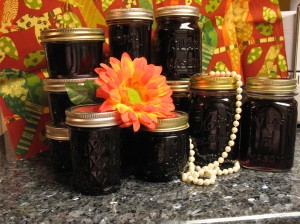Well our first year in beekeeping was an experience I will never forget! I finally understood the old timer’s passion when one said: “After your first year in beekeeping, you will become a different person, the bees will change you.” While another once told me; “After your first year in beekeeping you will know if you are a beekeeper or a beehaveer which ever one you are you will never be the same!.” How true they both were.
When we realized we lost ½ our hive this winter due to bad bee management, which cause a huge infestation of the Varroa mite, I was devastated. Being new at beekeeping I thought for sure I was doing everything right, little did I know there was more to it than just checking the monitoring tray for the normal Varroa mite signs and making sure the queen was still visible to me.
Varroa mites are just one of the many things that could and do go wrong, in our case, the nasty little critter was a big concern I totally overlooked. When inspecting your hive for varroa mites the following symptoms are a clue something may be wrong.
1. Mites that may be visible with the naked eye (a female mite measures about 1/16’ in width).
2. Checking your bees, or the uncapped larvae and pupae, on the monitoring/trapping trays (Preferred means of detection).
3. Inspecting the brood pattern to see if it appears to be a scattered pattern, and check to see if the cappings may become discolored and sunken.
As a whole, these symptoms are known as Parasitic Mite Syndrome (PMS) and this was the case in my hive this past winter. Because of my love for our bees and my guilt of being a bad bee mother, I decided I was going to try and save the hive. I went and picked up some healthy frames of brood and bees, caged my queen and now am waiting for 3 days to release her. I am hoping this may fix the hive? With strong healthy bees to fight off any mites that may be left, I am hoping that the queen will continue laying eggs and that brood will be good? In the mean time this is what I have learned about the importance of prevention/Treatment.
- Know how to use your screened bottom (important), as this piece of beekeeping equipment in effect reproduces the configuration of the lower part of a natural nest inside man-made hive.
- Propagate bees that demonstrate resistance or tolerance to the mites through hygienic, grooming or other innate behavior.
- Hive division with period of queenlessness. This is similar to what happens when a hive swarms.
I have heard a lot of other conflicting treatments such as. Chemical compounds, such as coumaphos, to so-called soft treatments as power sugar dusting. I am still learning about these and this time in my learning I am deteirmend to be chemical free in all my hives in doing this I am using the power sugar treatments. One Teacher told me the “Bees groom themselves just like monkeys and that they will take care of the mite problem”. Until I learn how to breed my bees to be more resistance or tolerance to the mites I will continue to powder sugar my hives.
As we enter our second year in backyard beekeeping, who knows what will bring about; in our venture to learn how to preserve the bees and keep our garden growing with the yummy treats we get each year from our harvest. As we wake up to see them guarding the entrance of the golden honey the James girls produce for us each year. We have come to realize that we (I) am a different person, I am a Beekeeper, and my girls make me happy.






























